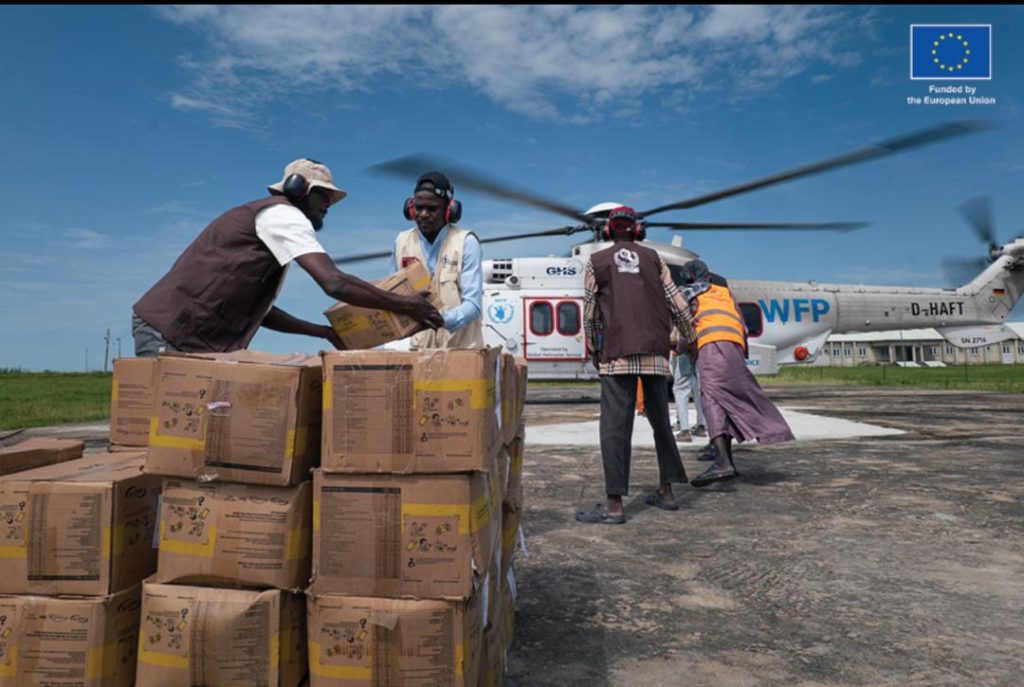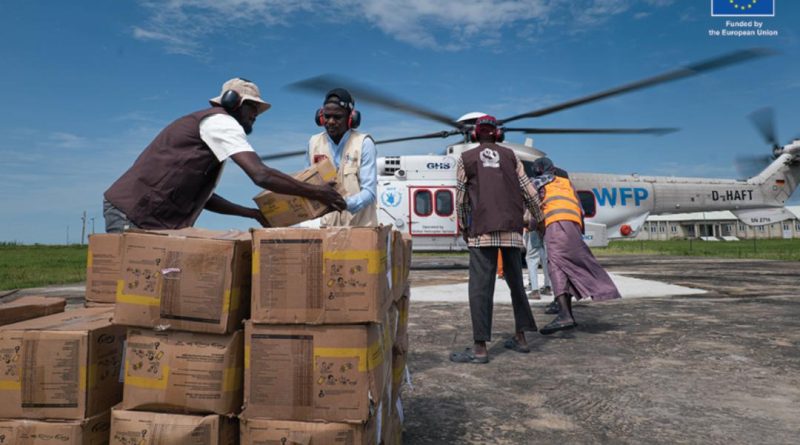Struggling To Survive — The Hidden Victims Of Nigeria’s Conflict
By Dr. Kelechi Onyemaobi
Ngala, Borno state: In northeast Nigeria, we find malnutrition rates are the highest among those who manage to escape conflict-hit, inaccessible locations in search of refuge in largertowns, where they receive food and nutritional support from the United Nations World Food programme (WFP).
Despite her best efforts, 19-year-old Yasa is unable to feed her crying daughter, Aisha. Barely 40 days-old, Aisha is suffering from acute malnutrition. Yasa is also malnourished, and she has stopped producing breast milk.

We meet Yasa sitting with a small group of women and children beneath a tree. They are all new arrivals at Arabic Camp for internally displaced persons (IDPs). The mood among the women is sombre – the weight of their experiences too heavy to speak aloud.
The camp sits on the edge of Ngala-Gomboru, a town five kilometres from the Cameroonian border in Borno state. Since 2016, Ngala has been home to a growing population of IDPs, now estimated at over 100,000 people. They have sought refuge here, fleeing from the long-running conflict in Northeast Nigeria between government forces and non-state armed actors.
Many of the newly arrived families, like Yasa and her daughter, have managed to escape from areas inaccessible to humanitarian actors. Fear and hunger have driven them from their homes. Yasa walked more than 50 kilometres from her village in Dime to find safety.
People across Northeast Nigeria bear the greatest burden of this 15-year conflict. According the latest food security analysis, Cadre Harmonise, 5 million people face acute food insecurity in the coming months and 2.6 million children are malnutrition in the region.
Yasa tells us that at least four people recently died from hunger in Dime. Determined to survive, she decided her only option was to escape and head towards Ngala.
“A lot of people are starving at home. They’re trapped in Dime,and there is no food to eat. I would eat wild seeds and grass. Sometimes, I would follow a trail of soldier ants, then dig up their nest to find a small mound of millet or sorghum seeds. This is how I survived,” says Yasa.
On arriving at Arabic Camp three weeks ago, Care International, who partner with WFP in Ngala, quickly arranged for her to be included in the nutrition programme. Yasa now receives rations of super cereal, fortified with extra vitamins and minerals. Carealso referred Aisha to the camp clinic for more specialist emergency care.
In Ngala more than 22,000 children receiving nutrition assistance provided under WFP’s preventative nutrition programme – supported by donors including the European Union. New arrivals at the camp, particularly malnourishedwomen and children, are immediately enrolled into the programme and receive targeted nutritional support.
“Presently, we have 116 cases of severe malnutrition which we referred for emergency treatment at clinics. We have enrolled about 280 moderate cases among new IDPs into the WFP nutrition safety net,” says Care’s Nutrition Assistant in Ngala.
“We fear a silent disaster is unfolding in some remote areas,” explains Chi Lael, Head of Communications at WFP in Nigeria.
“Gaining safe and unhindered access to these stranded communities to assess their needs is one of our top priorities”.
20-year-old Ata recently arrived in Ngala, having fled from her home in the village of Soloba, in Cameroon.
For the past two weeks she has been receiving supplementary food from WFP.
The super cereal she receives has helped to bring her four-month-old daughter, Ramata, back from the brink of starvation.
“When I first arrived in the camp, I was so weak I could barely feed my child”, says Ata. “Now my milk has returned and I am breastfeeding again. Ramata is getting stronger every day”.




